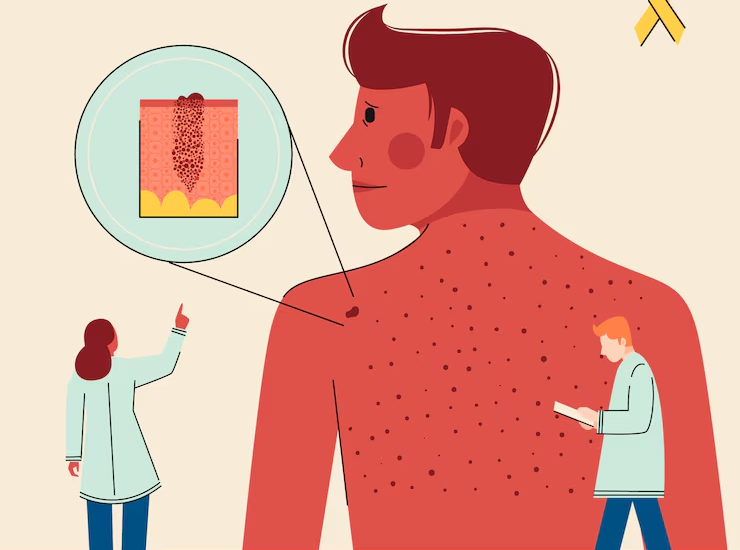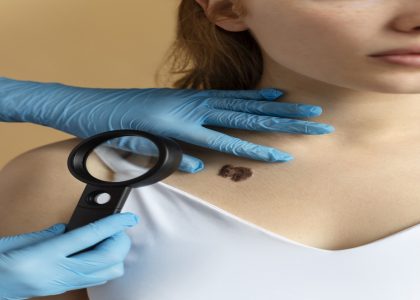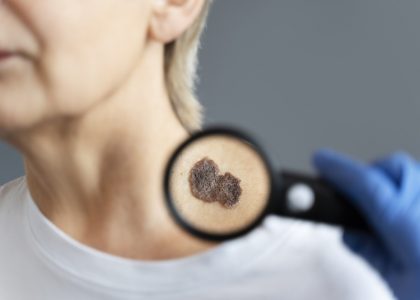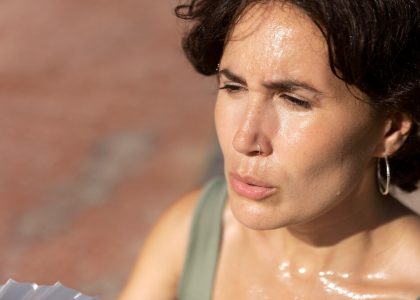Introduction
Skin cancer is one of the most common forms of cancer worldwide. In Australia, the rates are particularly high due to intense ultraviolet (UV) exposure. Early detection plays a crucial role in improving survival rates, especially for melanoma, the deadliest form of skin cancer. With timely diagnosis and intervention, the chances of successful treatment significantly increase. In this article, we will explore the importance of early detection in skin cancer, particularly melanoma, and how it impacts survival rates.
Skin Cancer in Australia: A National Concern
Australia has the highest rate of skin cancer globally, with more than 2,000 Australians dying from the disease each year. According to Cancer Council Australia, two in three Australians will be diagnosed with skin cancer by the age of 70. The country records over 1 million cases of non-melanoma skin cancer each year, and approximately 16,000 cases of melanoma are diagnosed annually.
Given these statistics, it’s vital to increase awareness about the importance of early skin cancer detection. Recognising the signs early can lead to prompt treatment, improving the chances of a positive outcome.
The Importance of Early Detection
When skin cancer is detected early, it is often easier to treat and has a higher likelihood of successful treatment. Statistics from Cancer Australia reveal that the five-year survival rate for melanoma is 90% when detected early. However, this rate dramatically drops to around 15-20% when melanoma is diagnosed at an advanced stage where it has spread to other parts of the body.
Early detection involves regular self-examinations and professional skin cancer screenings. This is particularly important for individuals who have a high risk of skin cancer due to factors such as fair skin, a history of sunburns, or a family history of skin cancer.
Understanding Melanoma
Melanoma is the most aggressive form of skin cancer, and early detection is especially crucial for this type. Melanoma begins in the melanocytes, the cells responsible for producing pigment in the skin. It can develop from an existing mole or appear as a new spot on the skin.
There are several warning signs that can indicate the presence of melanoma, often summarised by the “ABCDE” rule:
- Asymmetry: One half of the mole does not match the other.
- Border: The edges are irregular, ragged, or blurred.
- Colour: The mole has varying colours such as shades of brown, black, red, or blue.
- Diameter: The spot is larger than 6mm (about the size of a pencil eraser).
- Evolving: The mole changes in size, shape, or colour over time.
If you notice any of these signs, it is important to seek medical advice as soon as possible.
Non-Melanoma Skin Cancers: BCC and SCC
While melanoma is the most dangerous form of skin cancer, non-melanoma skin cancers such as Basal Cell Carcinoma (BCC) and Squamous Cell Carcinoma (SCC) are more common. According to the Australian Institute of Health and Welfare (AIHW), non-melanoma skin cancer accounts for the largest number of skin cancer cases, with over 800,000 treatments annually.
BCC and SCC have high cure rates when detected early. However, if left untreated, they can cause significant damage to the surrounding tissues and, in rare cases, spread to other parts of the body.
BCC often appears as a pearly or waxy bump, while SCC typically presents as a firm, red nodule or a flat lesion with a scaly, crusted surface. Like melanoma, early detection is key to effective treatment.
The Role of Skin Checks in Early Detection
Regular skin checks are essential for early detection of skin cancer. According to research from the Australasian College of Dermatologists, people who undergo regular skin checks are 40% more likely to detect melanoma early compared to those who do not.
During a professional skin check, a doctor will examine your skin for any suspicious moles or lesions that may require further investigation. The AIHW also reports that more than 95% of skin cancers are detected early in Australia through skin checks and biopsies, highlighting the importance of regular screenings.
Self-examinations should be conducted monthly, particularly for those at higher risk. By familiarising yourself with the appearance of your skin, you can quickly identify any changes that may warrant a professional evaluation.
Survival Rates and the Impact of Early Detection
The survival rates for skin cancer vary depending on the type and stage of cancer. However, early detection consistently leads to better outcomes:
- Melanoma: Early-stage melanoma has a five-year survival rate of around 90%, whereas late-stage melanoma has a significantly lower survival rate of around 15-20%.
- Basal Cell Carcinoma (BCC): BCC has a 99% cure rate when treated early, with minimal risk of spread.
- Squamous Cell Carcinoma (SCC): SCC also has a high cure rate with early detection, although it carries a slightly higher risk of metastasis compared to BCC.
These statistics underscore the importance of regular skin checks and early detection in improving survival rates for all types of skin cancer.
Preventative Measures and UV Protection
While early detection is vital, prevention is always better than cure. Protecting your skin from harmful UV radiation is one of the most effective ways to reduce your risk of developing skin cancer. This includes:
- Using broad-spectrum sunscreen with an SPF of 30 or higher.
- Wearing protective clothing, hats, and sunglasses.
- Seeking shade during peak UV radiation hours (10 AM to 4 PM).
- Avoiding tanning beds.
By taking these preventative measures and remaining vigilant about skin checks, you can significantly reduce your risk of developing skin cancer and improve your chances of successful treatment if cancer does develop.
Conclusion
Skin cancer remains a significant health concern in Australia, but early detection and regular skin checks can make a life-saving difference. By staying informed about the signs of skin cancer and taking steps to protect your skin, you can help ensure better outcomes and a healthier future.
Regular professional screenings and self-examinations are key components in catching skin cancer early, improving survival rates, and minimising the impact of this disease. If you notice any suspicious changes in your skin, don’t hesitate to seek medical advice.






